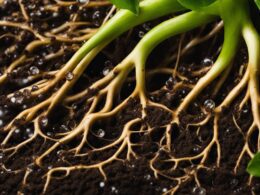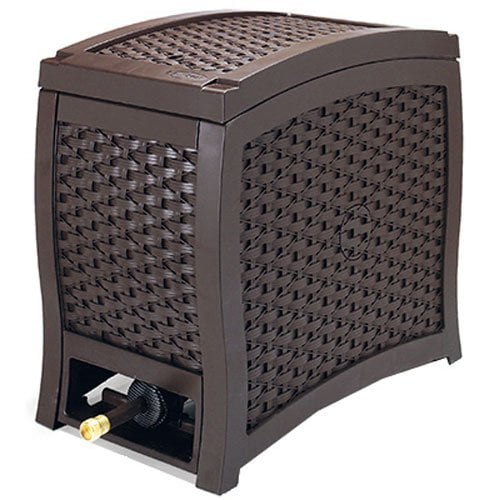Are you thinking of growing potatoes in your backyard garden? Timing is everything when it comes to planting potatoes, and getting it right can make all the difference in the success of your harvest. Planting potatoes at the wrong time can lead to a disappointing crop, but with the right knowledge, you can ensure a bountiful yield.
In this article, we will guide you through the best times to plant potatoes, factors to consider, and tips for optimal growth. Knowing when to plant potatoes is crucial to ensure they have enough time to mature and form tubers before the first frost.
By following our advice, you can feel confident in your ability to grow a healthy and abundant potato crop. So, let’s get started and learn about the importance of timing when it comes to planting potatoes.
Quick Takeaways
- Early spring and fall are the best times to plant potatoes.
- It’s too late to plant potatoes in warm regions after January or February for a spring crop and September for a fall harvest.
- Choose a quicker-maturing variety for late planting: Irish Cobbler, Yukon Gold, Norland, Kennebec, Rio Grande, Red Pontiac.
- Potatoes need six hours of sun a day for optimal growth.
What Should Follow Potatoes in a Crop Rotation Plan?
Planting after potatoes is an important aspect of a crop rotation plan. Potatoes can deplete soil nutrients, so it’s crucial to choose suitable successors. Legumes like peas or beans make excellent choices as they fix nitrogen to the soil. Other options include leafy greens such as lettuce or spinach, which counterbalance the potato’s heavy feeding. Rotating crops helps maintain soil health and reduces the risk of diseases and pests.
Best Planting Times
If you want to ensure a successful potato crop, you should plant them during early spring or fall. This allows for four months of growing time, giving the potatoes ample time to mature and form tubers before the first frost. Planting potatoes after May may result in problems, including warm soil temperatures in mid and late summer that can halt tuber formation.
When selecting potato varieties, it’s important to consider the timing of planting. Late planting requires a quicker-maturing variety like Irish Cobbler, Yukon Gold, Norland, Kennebec, Rio Grande, or Red Pontiac.
Additionally, proper soil preparation is essential for a successful crop. Ensure that your garden soil drains well, or use raised beds to help improve soil drainage. Plant potatoes at nearly ground level and hill up the dirt around the plants to encourage tuber development.
Factors to Consider
To properly consider when to grow potatoes, you should account for factors such as soil temperature, drainage, and sunlight exposure. Potatoes thrive in cool soil temperatures between 60°F (15°C) and 70°F (21°C), and planting them too early or too late can result in poor tuber development. It’s important to choose a potato variety that suits your planting schedule, as some varieties mature faster than others.
Consider the following factors when selecting a potato variety: the length of your growing season, the desired harvest time, and the average temperature in your region. For late planting, choose a variety that matures quickly such as Irish Cobbler, Yukon Gold, Norland, Kennebec, Rio Grande, or Red Pontiac. Mid-season varieties require 95-110 days to mature and are ideal for planting in early spring or late summer. Remember to ensure that your garden soil drains well and provide your potato plants with at least six hours of sunlight a day for optimal growth.
Tips for Optimal Growth
For optimal growth, make sure your potato plants get at least six hours of sunlight every day. The more sunlight they receive, the better their chances of producing healthy and tasty tubers. In addition, use shade cloth to keep the soil cool during hot temperatures. This will help prevent the plant from stopping tuber development and ensure a successful harvest.
Here are some growing techniques and soil management tips to help you grow the best potatoes possible:
-
Plant potatoes at nearly ground level and hill up the soil around the plants. This will help keep the soil loose and promote better drainage.
-
Ensure your garden soil drains well. If you have heavy clay soil, consider amending it with compost or sand to improve drainage.
-
Use raised beds for potatoes to help soil drainage. This will also make it easier to hill up the soil around the plants.
Frequently Asked Questions
Can potatoes be planted in containers or do they need to be planted in the ground?
Yes, potatoes can be planted in containers. Use a container with drainage holes, fill with potting soil, and plant seed potatoes. Choose compact potato varieties like Yukon Gold or Red Thumb. Keep the soil moist and provide 6 hours of sun.
How often should potatoes be watered and how much water do they need?
Water your potatoes regularly, keeping the soil consistently moist, but not waterlogged. Aim to water every 2-3 days, or when the top 2 inches of soil feel dry. Overwatering can lead to rot, so be careful not to drown your spuds!
Are there any natural remedies for common potato pests and diseases?
Protect your potato plants from common pests and diseases with companion planting. Plant marigolds, basil, and garlic near your potatoes to repel insects. Use organic insecticides like neem oil and diatomaceous earth to control pests.
What is the best way to store harvested potatoes?
To store harvested potatoes long term, keep them in a cool, dark, and dry place. Avoid storing them near onions or apples, which can cause sprouting. Check them regularly and remove any sprouting potatoes to prevent further sprouting.
How do you know if the soil is warm enough to plant potatoes?
To check if the soil is warm enough to plant potatoes, stick your finger into the soil. If it feels warm to the touch, it’s ready. Optimal soil temperature for germination is between 60-70°F.
Conclusion
So there you have it, now you know when to plant potatoes! The best time to plant is in the early spring, a few weeks before the last frost. Be sure to choose the right variety that suits your needs and consider the factors that can affect your crop.
It’s important to provide your potatoes with the right growing conditions and to monitor their growth regularly. By following these tips, you can ensure a successful and bountiful harvest of delicious and nutritious potatoes.
Happy planting!








